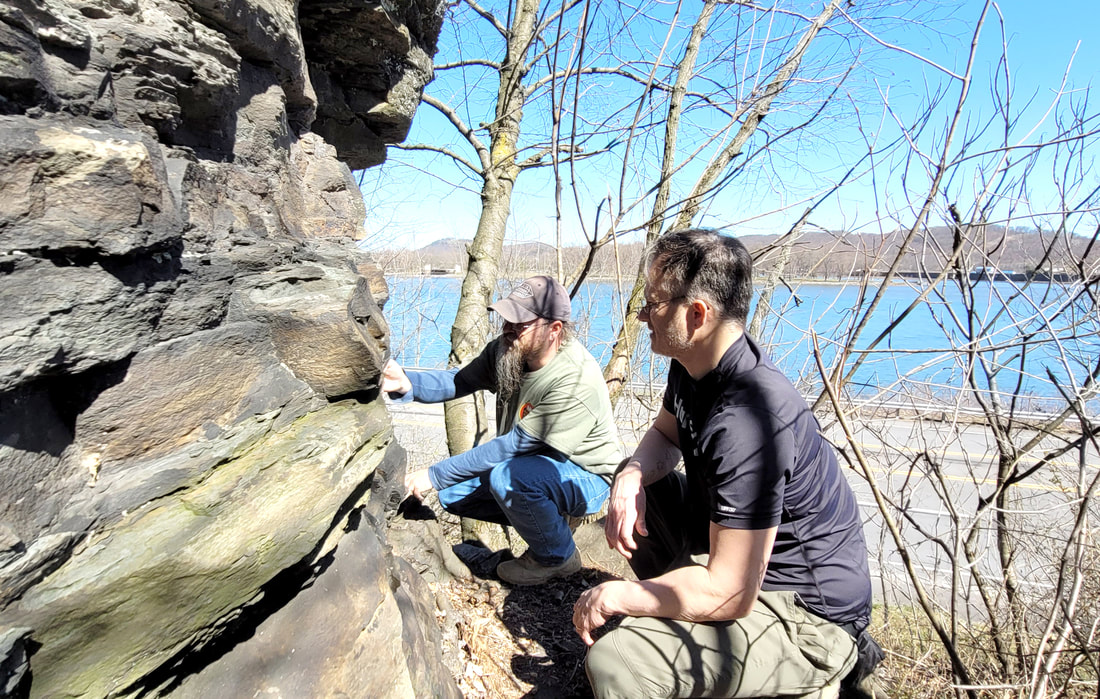Look at area's naturally occurring uranium vs new national drinking water study offers key takeaways4/28/2023 Doug Fessler, of Sunbury, has collected rocks and minerals since he was eight years old. Nearly two decades later, while hunting fern fossils with a friend near the Shikellamy Overlook, Fessler received a warning from an uncle about rumors of radioactivity within some of those rock structures. "I have a large mineral collection and broke down to buy a Geiger counter to test my minerals. I surprisingly had some radioactive rocks in my collection and decided to test the old rumor from my uncle about the small cave area near the Overlook," he said. "To my surprise, it took me very little time to have reading come up on my Geiger counter." Fessler's readings fluctuated from trace levels to upwards of 700 to 800 counts per minute (CPM). While noticeable, there is no real threat of physical concern from this level unless someone was to spend extensive amount of time in the immediate area of the higher readings. According to one online resource, at that level, you'd have to be in regular contact with those levels for more than a month or two to receive a potential "chronic dose." "I reached out to Andrew Rockhound (Eppig), the president of the Central PA Rock and Mineral Club, and the Riverkeeper since these rocks are so close to the river," said Fessler. According to Eppig, the site at the Shikellamy State Park lies in the Sherman Creek member of the Catskill geologic formation, which is known for emitting low-level radiation. "In the late Devonian era around 360 million years ago, uranium enriched water settled with muddy sediment on a Delta Plain, eventually hardening into the rock (mudstone) we see today," he said. "We found the most active deposit in this location to be confined to a narrow, roughly 6-inch layer in the rock face, and dissipated quickly only inches outside that band. This type of deposit is generally considered low risk, and that is what we found." Water samples were taken on April 3, 2023, by Middle Susquehanna Riverkeeper John Zaktansky from a small stream alongside the formation – a stream that feeds into the Susquehanna River – to rule out any leaching of radioactive materials into surface water. Results from Fairway Laboratories, now under Pace Analytics, indicated a level of 0.582 ± 0.664 picocuries per liter (pCi/L) of Uranium-238, 0.432 ± 0.779 pCi/L of Uranium-235 and 1.71 ± 1.14 pCi/L of Uranium-234. The EPA maximum contaminant level for uranium in drinking water is 30 micrograms per liter (ug/L) – which is equivalent to 20 pCi/L. It is worth repeating that this is the recommended maximum level for drinking water, not surface water (naturally occurring steams and creeks), which is what was tested at this site. Radon was also tested in the small stream next to this formation on April 3, 2023, with a result of 17.2 ± 23.2 pCi/L. While there is currently no federally enforced drinking water standard for radon, the EPA has proposed to require community water suppliers to provide water with radon levels no higher than 4,000 pCi/L. "The bottom line is that if we are talking about naturally occurring uranium, then I don't think there is any real general concerns for streams in our region," said Susquehanna University Freshwater Research Institute Director Matt Wilson after reviewing several recent reports. "Effects from mining, urbanization, etc., might cause some localized concern, but that would be more of an (isolated) pollution issue than natural leaching." The concept of uranium in drinking water came to the forefront of national news earlier this month via a Columbia University study that suggests that uranium has been found in half of the United States' public water systems. As a part of the study, Columbia researchers compiled the following map, which shows levels county by county: the darker the color, the higher the uranium level in water. Areas in bright white indicate "no data available." "While we obviously have some naturally occurring uranium in some of our geologic formations, and the recent Columbia University study helps raise awareness of uranium making into drinking water on a national scale, the results of the study show our area is less affected than other regions in the western half of the country," said Zaktansky. "Our local surface water sampling by the Shikellamy Overlook will lead to some investigation of what levels may be found in nearby groundwater reserves. However, the real takeaway for me – and hopefully others – is the reminder that it doesn't hurt to test our water for a wide variety of potential contaminants," said Zaktansky. "Unfortunately, that can be costly when you start adding in different compounds such as heavy metals, microplastics, PFAS and radioactive elements, among other things. "Our association is working to find a cost-effective way for everyday people to be able to test and have a better idea of what is in their well or public water sources for a wide gamut of concerns. Not only will this help individual people and their families address potential issues, but the data across the larger area will help us better identify potential sources for different types of pollution." Learn more about uranium in the environment by reading this EPA fact sheet. For basic info about radon and drinking water, check out this archived resource from the EPA. Andrew "Rockhound" Eppig created the following "Dirtman Report" video about his visit to the region and lessons people who love to "rockhound" should consider in terms of safety considerations around these sort of phenomenon.
1 Comment
7/7/2023 07:48:35 am
Very informative details. Thank you so much for sharing this blog.
Reply
Leave a Reply. |
AuthorsRiverkeeper John Zaktansky is an award-winning journalist and avid promoter of the outdoors who loves camping, kayaking, fishing and hunting with the family. Archives
July 2024
Topics |


 RSS Feed
RSS Feed